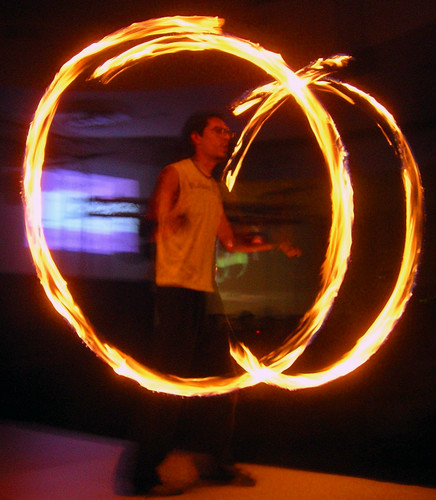
Empieza éste párrafo de manera muy confusa. Cada traductor sabrá lo que ha hecho con esta larga frase:
With respect to what I have called the indirect action of changed conditions, namely, through the reproductive system of being affected, we may infer that variability is thus induced, partly from the fact of this system being extremely sensitive to any change in the conditions, and partly from the similarity, as Kolreuter and others have remarked, between the variability which follows from the crossing of distinct species, and that which may be observed with plants and animals when reared under new or unnatural conditions.
Por mi parte, aun sin entenderla muy bien, la voy a traducir así:
Con respecto a lo que he llamado acción indirecta del cambio de condiciones, a saber, a través del sistema reproductivo del ser afectado, podemos inferir que la variabilidad es inducida, en parte por el hecho de que este sistema es extremadamente sensible a cualquier cambio en las condiciones , y en parte por la similitud, como Kolreuter y otros han señalado, entre la variabilidad que se deriva del cruce de especies distintas, y la que se puede observar en plantas y animales que han sido criados en condiciones nuevas o artificiales.
Algo (poco) se aclara si seguimos leyendo:
Many facts clearly show how eminently susceptible the reproductive system is to very slight changes in the surrounding conditions. Nothing is more easy than to tame an animal, and few things more difficult than to get it to breed freely under confinement, even when the male and female unite. How many animals there are which will not breed, though kept in an almost free state in their native country! This is generally, but erroneously attributed to vitiated instincts. Many cultivated plants display the utmost vigour, and yet rarely or never seed! In some few cases it has been discovered that a very trifling change, such as a little more or less water at some particular period of growth, will determine whether or not a plant will produce seeds. I cannot here give the details which I have collected and elsewhere published on this curious subject; but to show how singular the laws are which determine the reproduction of animals under confinement, I may mention that carnivorous animals, even from the tropics, breed in this country pretty freely under confinement, with the exception of the plantigrades or bear family, which seldom produce young; whereas, carnivorous birds, with the rarest exception, hardly ever lay fertile eggs. Many exotic plants have pollen utterly worthless, in the same condition as in the most sterile hybrids.
Que traduzco:
Muchos hechos muestran claramente cuán eminentemente susceptible resulta el sistema reproductivo a los cambios muy pequeños en las condiciones del entorno. No hay nada más fácil que domesticar un animal, y pocas cosas más difíciles que conseguir que se críen libremente bajo confinamiento, incluso habiendo cópula. ¡Cuántos animales hay que no se reproducen, a pesar de mantenerse en un estado casi libre en su país de origen! Esto es generalmente, pero erróneamente atribuido a instintos viciados. Muchas plantas cultivadas muestran la mayor firmeza, y sin embargo rara vez o nunca dan semillas! En algunos pocos casos se ha descubierto que un cambio muy insignificante, como un poco más o menos de agua en algún momento particular de crecimiento, determinará si una planta produce semillas. Yo no puedo dar aquí los detalles que he recogido y publicado sobre este mismo curioso tema, sino para mostrar cuán singulares son las leyes que determinan la reproducción de animales en cautividad, puedo mencionar que los animales carnívoros, incluso desde los trópicos, se reproducen en este país bastante libremente bajo confinamiento, a excepción de los plantígrados, o familia de los osos, que rara vez producen crías, mientras que, los pájaros carnívoros, con la excepción rara, casi nunca ponen huevos fértiles. Muchas plantas exóticas tienen polen completamente inútil, en las mismas condiciones que en los híbridos más estériles.
Como indicando que la reproducción es un proceso de especial sensibilidad al cambio ambiental. Pero luego indica:
I may add that as some organisms breed freely under the most unnatural conditions—for instance, rabbits and ferrets kept in hutches—showing that their reproductive organs are not easily affected; so will some animals and plants withstand domestication or cultivation, and vary very slightly—perhaps hardly more than in a state of nature.
Que traduzco:
Puedo añadir que, como algunos organismos crían libremente en las condiciones más antinaturales, por ejemplo, los conejos y los hurones mantenidos en jaulas, mostrando que sus órganos reproductores no son fácilmente afectados, de modo que algunos animales y plantas resistir la domesticación o cultivo, y varían muy poco , tal vez poco más que en un estado de naturaleza.
Por lo tanto: Los órganos reproductores son los más afectados por las condiciones ambientales. Así por ejemplo, muchos animales y plantas se reproducen mal en condiciones de cautividad. Siendo así que no todos los animales y plantas se reproducen mal en estado de cautividad, entonces existen algunos ejemplos de animales que se reproducen muy bien en estado de cautividad. Por lo tanto, los órganos sexuales no son en todos los casos los más afectados por el ambiente. De todo esto se deduce que la variación en cautividad nada tiene que ver con la variación en la naturaleza.
En conclusión: no parece adecuado decir que la granja sea un buen modelo para el estudio de la naturaleza, como el autor viene afirmando repetidamente.
Para quien se atreva, sigue el párrafo completo:
En inglés:
With respect to what I have called the in direct action of changed conditions, namely, through the reproductive system of being affected, we may infer that variability is thus induced, partly from the fact of this system being extremely sensitive to any change in the conditions, and partly from the similarity, as Kolreuter and others have remarked, between the variability which follows from the crossing of distinct species, and that which may be observed with plants and animals when reared under new or unnatural conditions. Many facts clearly show how eminently susceptible the reproductive system is to very slight changes in the surrounding conditions. Nothing is more easy than to tame an animal, and few things more difficult than to get it to breed freely under confinement, even when the male and female unite. How many animals there are which will not breed, though kept in an almost free state in their native country! This is generally, but erroneously attributed to vitiated instincts. Many cultivated plants display the utmost vigour, and yet rarely or never seed! In some few cases it has been discovered that a very trifling change, such as a little more or less water at some particular period of growth, will determine whether or not a plant will produce seeds. I cannot here give the details which I have collected and elsewhere published on this curious subject; but to show how singular the laws are which determine the reproduction of animals under confinement, I may mention that carnivorous animals, even from the tropics, breed in this country pretty freely under confinement, with the exception of the plantigrades or bear family, which seldom produce young; whereas, carnivorous birds, with the rarest exception, hardly ever lay fertile eggs. Many exotic plants have pollen utterly worthless, in the same condition as in the most sterile hybrids. When, on the one hand, we see domesticated animals and plants, though often weak and sickly, breeding freely under confinement; and when, on the other hand, we see individuals, though taken young from a state of nature perfectly tamed, long-lived, and healthy (of which I could give numerous instances), yet having their reproductive system so seriously affected by unperceived causes as to fail to act, we need not be surprised at this system, when it does act under confinement, acting irregularly, and producing offspring somewhat unlike their parents. I may add that as some organisms breed freely under the most unnatural conditions—for instance, rabbits and ferrets kept in hutches—showing that their reproductive organs are not easily affected; so will some animals and plants withstand domestication or cultivation, and vary very slightly—perhaps hardly more than in a state of nature.
Y en español:
Con respecto a lo que he llamado acción indirecta del cambio de condiciones, a saber, a través del sistema reproductivo del ser afectado, podemos inferir que la variabilidad es inducida, en parte por el hecho de que este sistema es extremadamente sensible a cualquier cambio en las condiciones , y en parte por la similitud, como Kolreuter y otros han señalado, entre la variabilidad que se deriva del cruce de especies distintas, y la que se puede observar en plantas y animales que han sido criados en condiciones nuevas o artificiales. Muchos hechos muestran claramente cuán eminentemente susceptible resulta el sistema reproductivo a los cambios muy pequeños en las condiciones del entorno. No hay nada más fácil que domesticar un animal, y pocas cosas más difíciles que conseguir que se críen libremente bajo confinamiento, incluso habiendo cópula. ¡Cuántos animales hay que no se reproducen, a pesar de mantenerse en un estado casi libre en su país de origen! Esto es generalmente, pero erróneamente atribuido a instintos viciados. Muchas plantas cultivadas muestran la mayor firmeza, y sin embargo rara vez o nunca dan semillas! En algunos pocos casos se ha descubierto que un cambio muy insignificante, como un poco más o menos de agua en algún momento particular de crecimiento, determinará si una planta produce semillas. Yo no puedo dar aquí los detalles que he recogido y publicado sobre este mismo curioso tema, sino para mostrar cuán singulares son las leyes que determinan la reproducción de animales en cautividad, puedo mencionar que los animales carnívoros, incluso desde los trópicos, se reproducen en este país bastante libremente bajo confinamiento, a excepción de los plantígrados, o familia de los osos, que rara vez producen crías, mientras que, los pájaros carnívoros, con la excepción rara, casi nunca ponen huevos fértiles. Muchas plantas exóticas tienen polen completamente inútil, en las mismas condiciones que en los híbridos más estériles. Cuando, por un lado, vemos que los animales domésticos y plantas, aunque a menudo débiles y enfermizos, crían libremente en un espacio limitado, y cuando, por otro lado, vemos a individuos, a pesar de tomar los jóvenes de un estado de naturaleza perfectamente domado, de larga vida y sanos (de los que podría dar muchos casos), y sin embargo, seriamente afectados en su sistema reproductivo por causas no percibidos como para no actuar, no debemos sorprendernos en este sistema, cuando se actúa bajo confinamiento, de manera irregular, de tener descendencia con alguna diferencia de sus padres. Puedo añadir que, como algunos organismos crían libremente en las condiciones más antinaturales, por ejemplo, los conejos y los hurones mantenidos en jaulas, mostrando que sus órganos reproductores no son fácilmente afectados, de modo que algunos animales y plantas resistir la domesticación o cultivo, y varían muy poco , tal vez poco más que en un estado de naturaleza.
.
La imagen de Lamarck está tomada de Socialist Standard
 El autor ha terminado la sección titulada Causas de Variabilidad, en la cual ha presentado el trabajo de Lamarck sin mencionar su nombre. Comienza ahora otra sección cuyo título vuelve a recordar directamente a Lamarck: Effects of Habit and the use and disuse of Parts. ¿Mencionará el autor en alguna ocasión adecuadamente sus fuentes? No en lo que se refiere a varios autores. Entre ellos, Lamarck. No obstante, sus ejemplos no tienen nada que envidiar al de la jirafa, con el que la tradición se ha encargado de ocultar la obra de un científico pionero para que destaque así la atrevida síntesis de quien se atrevió a copiarlo interesadamente.
En el párrafo que hace el número quince en la obra, un ausente Lamarck preside de nuevo la escena:
El autor ha terminado la sección titulada Causas de Variabilidad, en la cual ha presentado el trabajo de Lamarck sin mencionar su nombre. Comienza ahora otra sección cuyo título vuelve a recordar directamente a Lamarck: Effects of Habit and the use and disuse of Parts. ¿Mencionará el autor en alguna ocasión adecuadamente sus fuentes? No en lo que se refiere a varios autores. Entre ellos, Lamarck. No obstante, sus ejemplos no tienen nada que envidiar al de la jirafa, con el que la tradición se ha encargado de ocultar la obra de un científico pionero para que destaque así la atrevida síntesis de quien se atrevió a copiarlo interesadamente.
En el párrafo que hace el número quince en la obra, un ausente Lamarck preside de nuevo la escena:










 A partir de la tercera edición (1861), las primeras páginas de El Origen….contienen lo que Darwin vino a llamar Historical Sketch, con menciones de otros naturalistas que faltaban en ediciones anteriores. Era entonces el momento de eliminar este cuarto párrafo de su introducción en el que Darwin indicaba su pesar por no haber reconocido la asistencia de otros naturalistas (puesto que la tal asistencia es ahora reconocida en el sketch). Si no lo hizo fue sin duda por su habitual premura. Como consecuencia, he aquí otro ejemplo de su característica más constante: la ambigüedad. En la misma obra que expresa su sentimiento por no haber reconocido la asistencia de muchos naturalistas (en este párrafo), expresa también su reconocimiento a muchos naturalistas (a algunos de ellos en múltiples ocasiones). En particular, a Hooker le agradece tanto en el historical sketch
A partir de la tercera edición (1861), las primeras páginas de El Origen….contienen lo que Darwin vino a llamar Historical Sketch, con menciones de otros naturalistas que faltaban en ediciones anteriores. Era entonces el momento de eliminar este cuarto párrafo de su introducción en el que Darwin indicaba su pesar por no haber reconocido la asistencia de otros naturalistas (puesto que la tal asistencia es ahora reconocida en el sketch). Si no lo hizo fue sin duda por su habitual premura. Como consecuencia, he aquí otro ejemplo de su característica más constante: la ambigüedad. En la misma obra que expresa su sentimiento por no haber reconocido la asistencia de muchos naturalistas (en este párrafo), expresa también su reconocimiento a muchos naturalistas (a algunos de ellos en múltiples ocasiones). En particular, a Hooker le agradece tanto en el historical sketch 











































